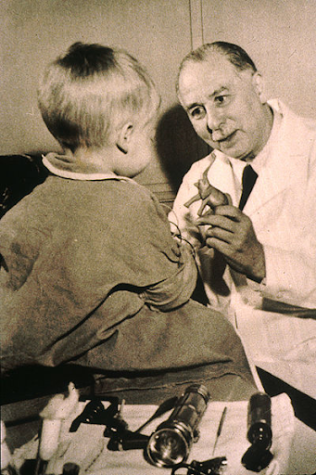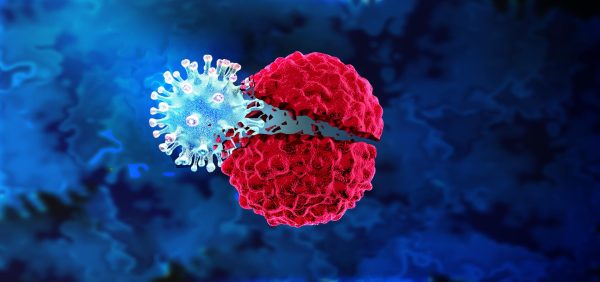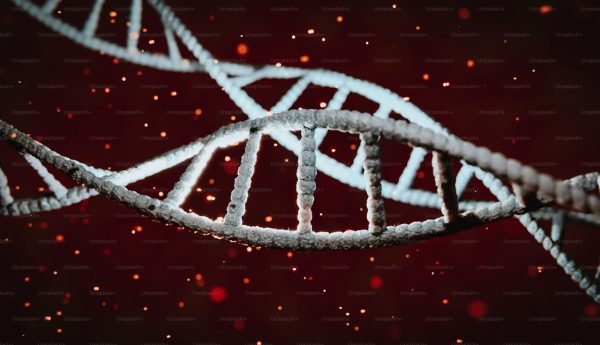Chemotherapy: “A Penicillin For Cancer”
A physician with an experimental bent, new innovations in chemotherapy, and what the future holds for chemotherapy treatments.

Cancer Cells | Credit: NIH
Chemotherapy is “a penicillin for cancer.”
– Oncologist Dusty Rhoads
The Emperor of All Maladies, Dr. Siddhartha Mukherjee
I. A Revolution Begins to Rumble
The year is 1950. Everything hurts as you lie on a cold bed at the Children’s Hospital in Boston. Reaching for a glass of water causes an electrifying pain to cascade throughout your body. The musty air gives you a light feeling as if you were dangling your legs off of a cliff. All hope seems to be lost, but one peculiar man stands out from the rest: Dr. Sidney Farber. Dr. Farber’s experimental nature frightens the hospital staff; however, his renowned treatments and hunger for cures have patients from all over the country flocking to his wards.
Today, cancer is a leading cause of death in the United States – each year more than 1.6 million Americans are diagnosed with cancer and approximately 600,000 die from it. Thanks to the work of the late Dr. Sidney Farber, the father of chemotherapy, there is hope for those around the world who are plagued with this unrelenting disease.

The revelation of chemotherapy hinged on an unforeseen substance: folic acid. Folic acid is found in fruits and vegetables, but is also a necessary ingredient for cell division – a crucial process that is constantly occurring in our bodies. Folic acid had been previously shown to help with red blood cell production, so Farber decided to administer folic acid to children with leukemia – any type of cancer in the blood – hoping that the blood would return to its natural state. The trial failed in the worst possible way. It so happened that the folic acid accelerated the growth of the leukemia. Farber’s reckless clinical trial had likely shaved off years of the children’s lives.
If folic acid accelerates the growth of cancer, would there be a chemical that works in the opposite manner? Farber realized that he needed to search for ‘antifolates’. Luckily, Farber’s colleague Yellapragada Subbarao had precisely that, a chemical called aminopterin. Farber injected the new chemical into a two year-old child with advanced leukemia, Robert Sandler. The effect was immediate – the malignant blood cells decreased in count and Sandler was slowly able to return to normal activities. Thus, the field of chemotherapy was born.
Farber’s research got the chemotherapy revolution rolling. Soon, scientists Emil Frei, Emil Freireich, and James Holland would develop “Combination” chemotherapy. These therapies consist of an assortment of drugs, each with their own target, to combat chemotherapy resistance. The three scientists created ‘VAMP’, a collection of four different chemotherapy drugs, and administered it to patients with Acute Lymphoblastic Leukemia. The result was miraculous – the patients went into long remissions. Today, nearly all chemotherapies are based on this method.

Chemotherapies are complicated weapons – they will help win the war against cancer but also cause the body significant damage. They weaken the immune and cardiovascular systems, and cause many other problems, while also defeating tumor cells. Although chemotherapy has saved millions of lives, scientists must continue to search for new solutions and work to make chemotherapy more effective. As treatments such as CAR T-cell therapy appear on the horizon, we must re-evaluate the efficacy of chemotherapy and aim to make cancer treatments less harmful.
II. Into the Future

Researchers are searching for better ways to apply chemotherapy and manage its harsh side effects. At Memorial Sloan Kettering Cancer Center, Dr. Lee Jones is attempting to make exercise therapy part of the chemotherapy recovery regimen to help patients combat fatigue and cardiovascular deconditioning. Exercise therapy marks a new wave of innovation in cancer research; however, it’s a tool that is already being used to treat heart conditions and other diseases. Dr. Jones has shown that the introduction of exercise therapy may have a considerable clinical benefit for patients with breast cancer, specifically by reducing the chance of cardiovascular complications. Next, oncologists must work towards designing workouts that are specific to patients – patients of different fitness levels cannot undergo the same exercise plan.
Three hours away, in Boston, Dr. Omid Farokhzad, Dr. Robert Langer, and others are developing nanoparticles that can encapsulate chemotherapy treatments. In this way, the chemicals can be transported directly to the tumor instead of the healthy tissues of the body, resulting in more effective chemotherapies and fewer side effects. This novel method holds immense promise; however, researchers must first alleviate the effects of drug resistance, develop the most effective drug combinations with nanoparticles, and learn more about the target tumors.
One of the main problems associated with chemotherapy is drug resistance. For example, in Acute Myeloid Leukemia (AML), a mutation in the gene DNMT3A can result in chemotherapy being ineffective. Therefore, as scientists learn more about the causes for chemotherapy resistance, it’s important for oncologists to examine a patient’s genome so that the best treatments can be administered. Perhaps gene editing tools such as CRISPR-Cas9 could be utilized to cut out mutations if chemotherapy is the sole treatment available for a particular type of cancer.
III. The Metamorphosis of a Revolution
The chemotherapy revolution is transforming as scientists continue to break the boundaries of cancer research. From Dr. Farber’s experiments to the development of exercise therapy and nanoparticles, it’s clear that the field of chemotherapy has come a long way. It’s no longer a one-treatment-fits-all, penicillin-like approach. Instead, researchers are searching for and creating therapies that are best suited to treat an individual patient’s disease. Chemotherapy is just one of the many ways in which cancer can be attacked, and hopefully it will evolve into more patient-friendly treatments.
Sidharth is a senior at BASIS Independent Brooklyn. He is dedicated to using journalism to foster community and bring awareness to the important problems...










